
Someday, all the traffic we get to our websites will be referrals from other trusted websites, word of mouth, positive chatter about our companies on social media, and happy repeat customers. Until then, use this beginner online advertising guide to kickstart your campaigns.
By the end of this post, you’ll know everything needed to start driving high-quality and profitable traffic to your web properties.
Digital Advertising Channels
While there are tons of options when it comes to choosing an advertising channel(s), to start, it’s worth focusing on only a few of them. The better you know your audience, the further you can narrow the list to those channels you know your prospects and customers are most likely to be on. Here’s a list worth looking into first.
The behemoth of the online advertising industry (though Facebook is catching up!), ad revenue is the core of Google’s business. They provide several options for advertising you’ve probably interacted with yourself while browsing the web, along with several ad formats including text, display, shopping, and video.
Search
One of the the original online paid ad options is through Google’s search function. For example, someone needs new shoes for their kids and does a search, which produces these results:
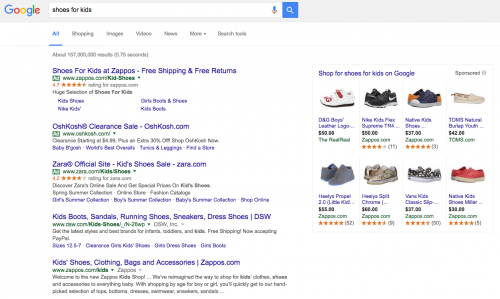
The top three results on the left (text ads) plus the results on the right (shopping ads) are all sponsored advertising by various companies that sell kids shoes. These results are determined by companies bidding on keywords through an auction system in the Google Adwords tool. The higher a company bids, the more likely it is that their ad will be shown (we’ll discuss costs in more detail below).
Just like any auction, the more popular a keyword is, the higher the bid is likely to be. Below are a couple of examples that show how different a bid can be depending on the keyword:


In addition to Google’s search engine result pages (SERPs), Adwords customers can choose to have their ads displayed on the Google Display Network. Below is an example of ESPN2 advertising the broadcast of a Major League Soccer game. These are display ads on espnfc.com (as opposed to the text and shopping ad examples above).
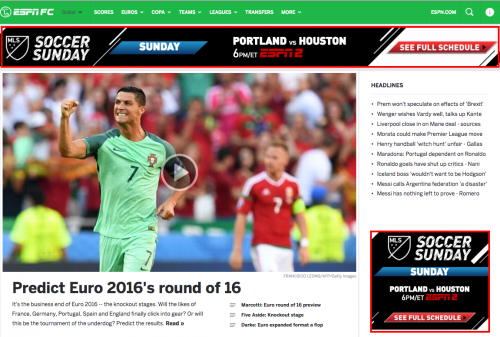
YouTube
Google isn’t the only search engine available to advertisers. With more than a billion users, YouTube is reportedly the 2nd-largest search engine. YouTube offers advertisers the engaging and more interactive medium of video as an ad format, in addition to display ads.
Typically, YouTube video ads appear at the beginning of a selected video, and display ads are shown on top of a video in the lower section of the video window. Below is a screenshot example of a video ad that would be shown at the beginning of a selected video.
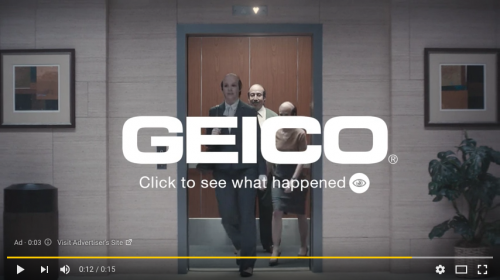
At the end of Q4 2015, Facebook boasted 1.59 billion users each month. Facebook also owns Instagram, which has 400 million users per month and is another advertising channel available through the Facebook network.
Combine the number of users with the information that Facebook has available on each user and it’s easy to see how this channel can provide powerful (and sometimes creepy) targeting capabilities for advertisers. We’ll cover various targeting methods available across all these channels a little later in the post.
Because of all the ways Facebook has created to interact with their platform, including news feeds, pages, events, videos, etc, they offers several formats for advertisers based around your campaign objectives. Here’s a screenshot from the campaign set up in Facebook’s Business Manager, the tool used to manage advertising on Facebook and Instagram.
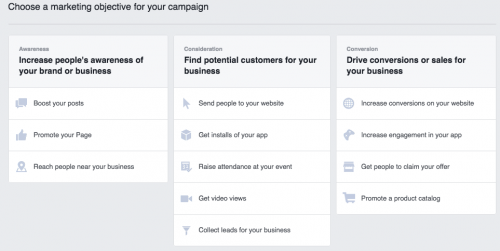
Two of the most-used ad formats include a news feed ad and sidebar ad, which could be promoting a Facebook page, a content offer that links to an external website, or an app download, among other things. You’ll see these ads include both image and video formats.
Here’s an example newsfeed ad by one of our favorite tools.
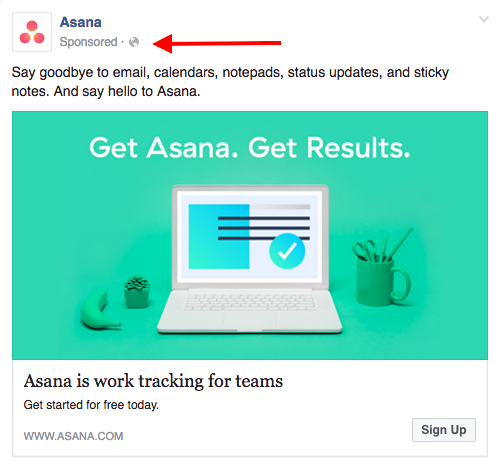
Bing
Bing is the search engine owned by Microsoft, and while it’s significantly smaller than Google, Bing Ads are worth considering, depending on where your specific search engine traffic comes from and the quality of that traffic. Bing offers exposure to more than just searches on Bing.com. Their network also includes searches from AOL and Yahoo.
You might be better off getting to know the Google Adwords interface first. Once you spend some time there, the Bing Ads interface will be familiar, as they have a lot of similarities. You’ll also find similar formats on Bing Ads including search, display, and shopping options.
After Facebook and Instagram, Twitter is next in line when it comes to active monthly users at about 310 million (as of March 2016). It boasts broad worldwide usage, and depending on your user and customer base, it can be a channel to consider through paid advertising.
Twitter’s one and only medium is the tweet. Through this medium, there are several things you can do to engage an audience, depending on your campaign objectives, which can range from growing Twitter followers, to collecting leads, to directing prospects to your website.
Below are the options you’ll see when creating a campaign in Twitter:
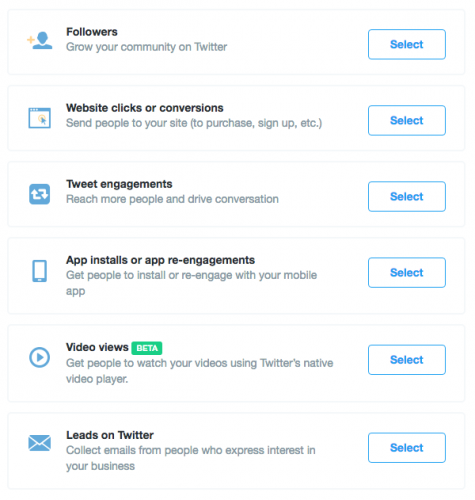
Others
There are plenty of other channels to choose from when it comes to digital advertising, including LinkedIn, Pinterest, and Snapchat. Once you’ve gotten comfortable with online advertising, all of them are worth considering after determining where your prospects and customers hang out online.
Until then, the channels covered above are large enough that most people shouldn’t have any problems targeting and finding qualified traffic.
Targeting Methods
Once you’ve picked your channel, you can determine the audience you’d like to target. Targeting capabilities in digital advertising have gotten really good. You’ve likely experienced targeting in some form through your interactions on the web. You may have even gotten a little creeped out by how targeted an advertising message was to you.
This level of message specificity used to be really expensive and not practical for most marketers. That’s not the case anymore. Every channel we’ve discussed so far has very powerful targeting capabilities you can start using right away, without having a large advertising budget.
Keyword
This is the targeting method most people are familiar with and has probably been around the longest. Pioneered by Google, keyword targeting allows an advertiser to bid on keywords through an auction that the advertiser thinks prospective customers might use to search for their product or a problem their product solves. Keyword targeting is also available on other channels besides Google.
Many of these channels (Google and Bing, in particular) offer several keyword-matching options that allow you to better match prospective customer search patterns.
Broad match – this matches keywords related to the original search including misspellings, synonyms, and variations of the keyword.
Phrase match – this method will match on keywords that are part of a phrase.
Exact match – this method will match on the exact term.
Negative match – this method allows you to exclude a term.
For more information, read Google’s guide on how each match type works, including examples.
Demographic
The interwebs knows a lot about you, primarily through profiles you’ve filled out on sites like Facebook, Google+, Instagram, Pinterest, Twitter, etc. As a result, these sites can offer targeting to advertisers that match their prospective customer profiles.
For example, here’s a summary of details we used recently for a Facebook ad (which includes both demographic and behavioral components):
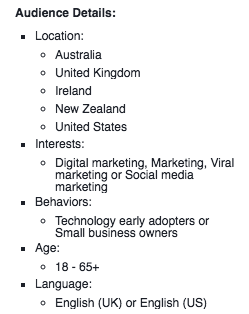
Behavioral
Whenever someone browses around the web, clicks on a link, makes a purchase, or takes pretty much any action online, they are leaving a digital footprint behind that can be used for targeting.
Searching for a new car? Looking for where your next vacation will be? Seeking out a restaurant? Reading stories about your favorite sports team? These things can infer a specific behavior and used for targeting.
Here’s an example of a few of the behavioral targeting options available through Facebook:
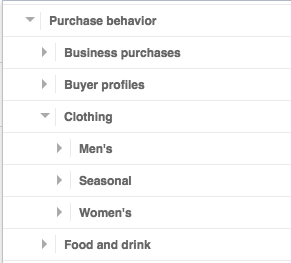
Retargeting
With the targeting methods we’ve discussed so far, the person being targeted generally isn’t known to you. Using keywords, demographic, and behavioral information, you’re targeting the profile of a person you think would be a good match for your product or service.
Retargeting allows you to market to someone who is known to you. You might not have their name, email address, or really much information at all. However, they’ve at least visited a web property you have some control over, allowing you to cookie (a small file stored on the user’s browser) the user for future targeting.
Most of us have experienced one form of this targeting, in which we visit a site, then see online ads related to that site on other (usually non-related) websites. This occurs because there is a cookie in your browser indicating you visited a certain page, and other websites use that cookie to serve a specific ad.
There is another form of retargeting in which you have some kind of identifying information about a prospect and/or customer. Most of the channels discussed in this post give advertisers the option to upload a list of prospect or customer information (typically email addresses) which is then used to serve ads. For example, if you purchase a product from a company and they have your email address, that company can upload your email address to Facebook and subsequently serve you ads on Facebook for related or additional products they might have.
Landing Pages
In most cases (I hope!) the goal of your digital advertising is to generate something of value. That might be an email address that can be used to send follow-up communications, or an online sale if you have an e-commerce business. Channels such as Facebook and Twitter offer the ability to drive new likes and followers with ads, but it’s rare that a like or follow is as valuable as an email address or direct revenue from a sale.
In order to collect something of value (like an email address), you’re going to want do everything possible to optimize the experience of the person who clicked your ad. If you want to collect something of value, then logic tells us we need to offer something of value. For an e-commerce sale, this is a relatively easy thing to do. For non e-commerce sites, a common practice is to offer some form of content the visitor would find valuable, or use a giveaway to incentivize the visitor to provide an email or take some other action.
This is where a dedicated landing page clearly explaining your offer and eliminating distractions can help you make the most of your ad spend. Don’t, I repeat, don’t send your paid advertising traffic to your home page!
When you consider how much time you’ve just spent targeting the perfect group of prospective customers, it would be a massive waste of time and money not to use a landing page where you can tailor your message specifically to that targeted group.
The art and science of building great landing pages is beyond the scope of this post, but we’d strongly encourage you to educate yourself on what makes an effective landing page. There are plenty of landing page resources out there.
Cost
As you probably assumed, these channels don’t allow you to advertise for free :) So, how do they make their money?
On all the channels we’ve discussed (and across virtually every digital advertising channel), you’ll usually pay for a cost per action. A few common acronyms represent these actions:
PPC – Pay Per Click – Sometimes also referred to as CPC for Cost Per Click, this is the most popular form of cost structure, and as the acronym suggests, you’ll pay a set amount for each click on your ad.
CPM – Cost per thousand impressions – The action in this cost structure is an impression of your ad on a channel. This would typically be used for a company only interested in branding, vs. the primary goal of collecting a lead.
CPV – Cost Per View – As video ads become more prevalent, this cost structure has been created to accommodate this ad type.
A few other helpful acronyms you’ll come across related to cost and digital advertising include:
CPA – Cost Per Acquisition
CPC – While this is sometimes used to describe Cost Per Click, it is also used to describe Cost Per Conversion.
And one of the most important acronyms of all is…
ROI – Return on Investment
One of the great advantages of the web is the ability to track virtually everything, including the cost to acquire leads or make a sale. In fact, most channels provide the ability to show the per-unit cost in their standard reports.
If you haven’t done so already, it is well worth your time to determine the unit economics of acquiring a new lead or customer. Once you’ve determined the value of a new lead or customer, you can use the per-unit costs provided in the last section to determine the return on your advertising investment. This is sometimes also called ROAS, or Return On Ad Spend.
Each channel you use will have a different cost associated with acquiring a lead or customer. Over time, as you compare these costs with the value of each customer, you’ll be able to refine your ad spending to only focus on those channels that provide the highest and most profitable ROI.
The world of online advertising can be daunting because there is so much to it. Companies and full-time professional positions focus on digital ads, so don’t get frustrated if you’re new to this area of marketing. Focus first on some of the basics covered in this post, and share any questions you have in the comments below!